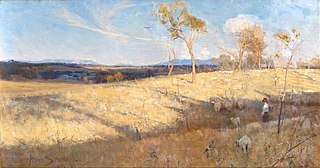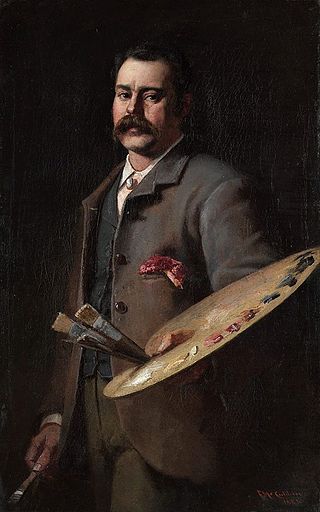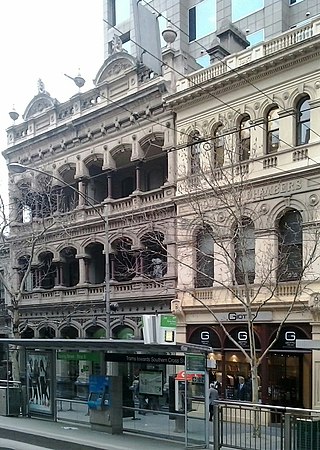Grand Canal can refer to multiple waterways:

The Victorian Artists Society, which can trace its establishment to 1856 in Melbourne, promotes artistic education, art classes and gallery hire exhibition in Australia. It was formed in March 1888 when the Victorian Academy of Arts and the Australian Artists' Association amalgamated.

Giovanni Antonio Canal, commonly known as Canaletto, was an Italian painter from the Republic of Venice, considered an important member of the 18th-century Venetian school.

The Heidelberg School was an Australian art movement of the late 19th century. It has been described as Australian impressionism.

James Wilson Morrice was one of the first Canadian landscape painters to be known internationally. In 1891, he moved to Paris, France, where he lived for most of his career. W. Somerset Maugham knew him and had one of his characters say,
...when you've seen his sketches...you can never see Paris in the same way again.

Frederick McCubbin was an Australian artist, art teacher and prominent member of the Heidelberg School art movement, also known as Australian impressionism.

Francesco Lazzaro Guardi was an Italian painter, nobleman, and a member of the Venetian School. He is considered to be among the last practitioners, along with his brothers, of the classic Venetian school of painting.

Sir Arthur Ernest Streeton was an Australian landscape painter and a leading member of the Heidelberg School, also known as Australian Impressionism.

Eugene de Blaas, also known as Eugene von Blaas or Eugenio Blaas, was an Italian painter in the school known as Academic Classicism.

Saint-Georges majeur au crépuscule refers to an Impressionist painting by Claude Monet, which exists in more than one version. It forms part of a series of views of the monastery-island of San Giorgio Maggiore. This series is in turn part of a larger series of views of Venice which Monet began in 1908 during his only visit there.

Ca' Pesaro is a Baroque marble palace turned art museum, facing the Grand Canal of Venice, Italy. Today it is one of the 11 museums run by the Fondazione Musei Civici di Venezia system.

Walter Herbert Withers was an English-born Australian landscape artist and a member of the Heidelberg School of Australian impressionists.

Grosvenor Chambers, at number 9 Collins Street, Melbourne, contained the first custom-built complex of artists' studios in Australia.

Henry Woods was a British painter and illustrator, and one of the leading Neo-Venetian school artists.

Golden Summer, Eaglemont is an 1889 landscape painting by Australian artist Arthur Streeton. Painted en plein air at the height of a summer drought, it is an idyllic depiction of sunlit, undulating plains that stretch from Streeton's Eaglemont "artists' camp" to the distant blue Dandenong Ranges, outside Melbourne. Naturalistic yet poetic, and a conscious effort by the 21-year-old Streeton to create his grandest work yet, it is a prime example of the artist's distinctive, high-keyed blue and gold palette, what he considered "nature's scheme of colour in Australia".

Le Grand Canal is an oil on canvas painting by French Impressionist painter Claude Monet (1840–1926). It is one of six paintings looking down the Grand Canal towards the Salute church. This Grand Canal series is in turn part of a larger series of paintings of Venice which Monet undertook during 1908 on his only visit to the city. The artist is generally regarded by art historians as being at the peak of his powers at this period. The paintings were begun en plein air and completed in France.

Algernon Cecil Newton was an English landscape artist known as the "Canaletto of the canals".

Leon Pole was an Australian artist who was associated with the Heidelberg School art movement, also known as Australian Impressionism.

Le Palais Ducal or The Doge's Palace is the name given to various oil paintings which depict the Doge's Palace made by Claude Monet during a visit to Venice in 1908.

The letter is an 1884 painting by the Australian artist Frederick McCubbin. The painting depicts a young woman reading a letter walking in the bush alongside a stream.



















